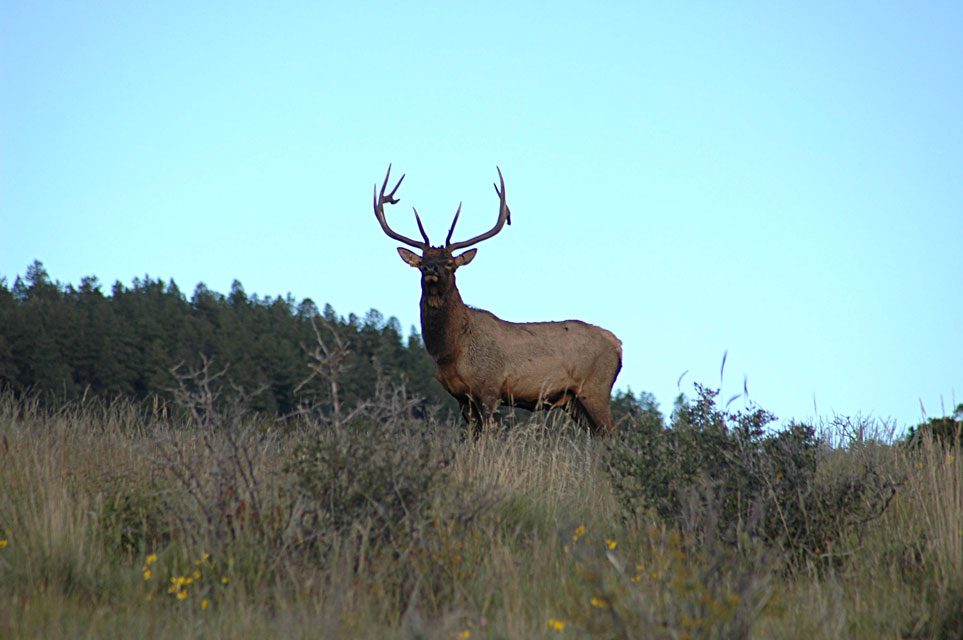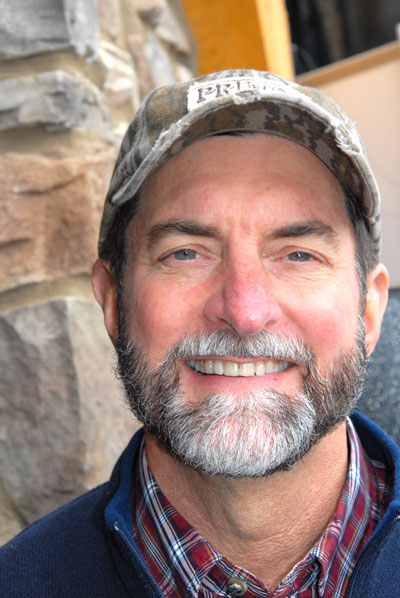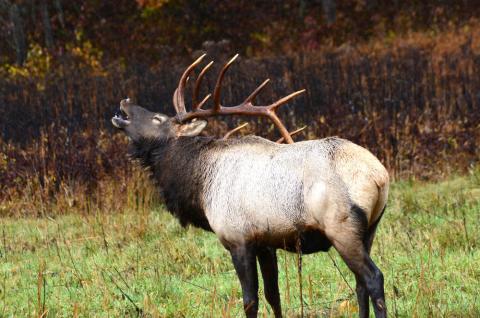provided by John Phillips
Longtime Mossy Oak Pro Will Primos of Flora, Mississippi, has been hunting elk every year since 1988. He said, “I’ve had some fantastic opportunities in my lifetime to call in hundreds of bull elk.” Primos, the creator of Primos Hunting hunts for elk in three states annually. He’s been producing videos and products for the elk-hunting industry for many years. “We wanted to get the public excited about not just elk but hunting and protecting them as well,” he said. “We’re strong supporters of the Rocky Mountain Elk Foundation and its mission.” Primos doesn’t just call and take elk himself, he also guides and calls for other people. Primos has taken or called more than 200 elk for others for his videos, “Primos The Truth 19: Big Bulls Video.”

For elk season 2020, we've leased a ranch to film five hunters taking big bull elk. We may call two to six different bulls up before one of our hunters takes a bull with his bow. We always try to take mature bulls, so sometimes we pass up bulls that other hunters may take. One advantage that I have whether I’m hunting, calling or filming is that I get a real education on learning the body language of the elk and understanding how elk react to certain types of calls. All animals that can be called by a human respond in different ways to calls, according to the terrain and environment in which they live.
In one of the places that we hunt in New Mexico, we may see elk out in the prairie at night. We call this area the “dance floor” because the big bulls chase cows and satellite bulls all night until the sun rises. In the morning, elk may stay out on the prairie, or they’ll move back into the timber at first light. We try to watch the bulls from a great distance because the prairie is so open they’ll spot you and spook. Oftentimes, we wait until they go into the big timber to call them. Then they’ll come looking for us. One thing I have learned is that successful elk hunting with a bow depends on what the terrain is like, how you use the terrain, and what you do in the areas when you pinpoint elk.
 For me, elk hunting is more than just taking an elk. One of my most memorable elk hunts was in the Little Belt Mountains of Montana. My wife, Mary, was with me and our cameraman, Ken Fleming of Alabama. We spotted a nice bull down in a depression between two timbered ridges. We backed out, went out into the open and tried to get into one section of timber where we could call to him with the wind in our favor. As we were going up the ridge of an elk trail to reach the spot where I wanted to call from, I spotted a cow elk 40 yards away from us, walking straight toward me. As I continued looking, I noticed a really big bull with a wide, tall rack right behind her. When the cow was within 15 yards of us, she stopped, looked at us and tried to understand what we were. While I looked at her, I was hoping to have an opportunity to draw my bow before the bull got to me. The bull was now at 20 yards and bugled. Finally, she spooked and ran. Unsurprisingly, the big bull spooked too. However, thankfully I was able to stop him by making a cow elk call with my diaphragm. Just as the bull stopped, I drew my bow.
For me, elk hunting is more than just taking an elk. One of my most memorable elk hunts was in the Little Belt Mountains of Montana. My wife, Mary, was with me and our cameraman, Ken Fleming of Alabama. We spotted a nice bull down in a depression between two timbered ridges. We backed out, went out into the open and tried to get into one section of timber where we could call to him with the wind in our favor. As we were going up the ridge of an elk trail to reach the spot where I wanted to call from, I spotted a cow elk 40 yards away from us, walking straight toward me. As I continued looking, I noticed a really big bull with a wide, tall rack right behind her. When the cow was within 15 yards of us, she stopped, looked at us and tried to understand what we were. While I looked at her, I was hoping to have an opportunity to draw my bow before the bull got to me. The bull was now at 20 yards and bugled. Finally, she spooked and ran. Unsurprisingly, the big bull spooked too. However, thankfully I was able to stop him by making a cow elk call with my diaphragm. Just as the bull stopped, I drew my bow.
But, when I looked for my sight, I could tell that the sight pin was lower than normal. While I tried to adjust it, the bull saw me and ran off. I never got to take my shot at him. This bull had third points that were about 7-inches long, which were extremely short for a bull his size. Bulls with antlers shaped like a whale’s tail or a fish tail on their 5th and 6th points have the potential to be really nice mature bulls. Even though this bull had short third points, he still had everything else. His rack was wide and he had long top tines, long beams, great front points and nice fish tails on the top. He probably would have scored 360 inches. Once I thought about what had just happened, I realized that having a cow elk bugle right in front of me was an amazing opportunity. No, I didn’t take the bull, and no, I didn’t take the cow. However, capturing a special moment like that with my wife and cameraman was a memory that would stick with me forever.
I guess that’s one of the reasons I enjoy hunting and calling elk; not only do I get to watch and experience getting close to animals that often weigh from 800-1,100 pounds, but I also communicate with them and experience the environment where they live. Helping other people see elk who may not have ever seen a bull before is why I continue to return to elk country every year - whether I’m calling, filming and/or attempting to shoot an elk.






























